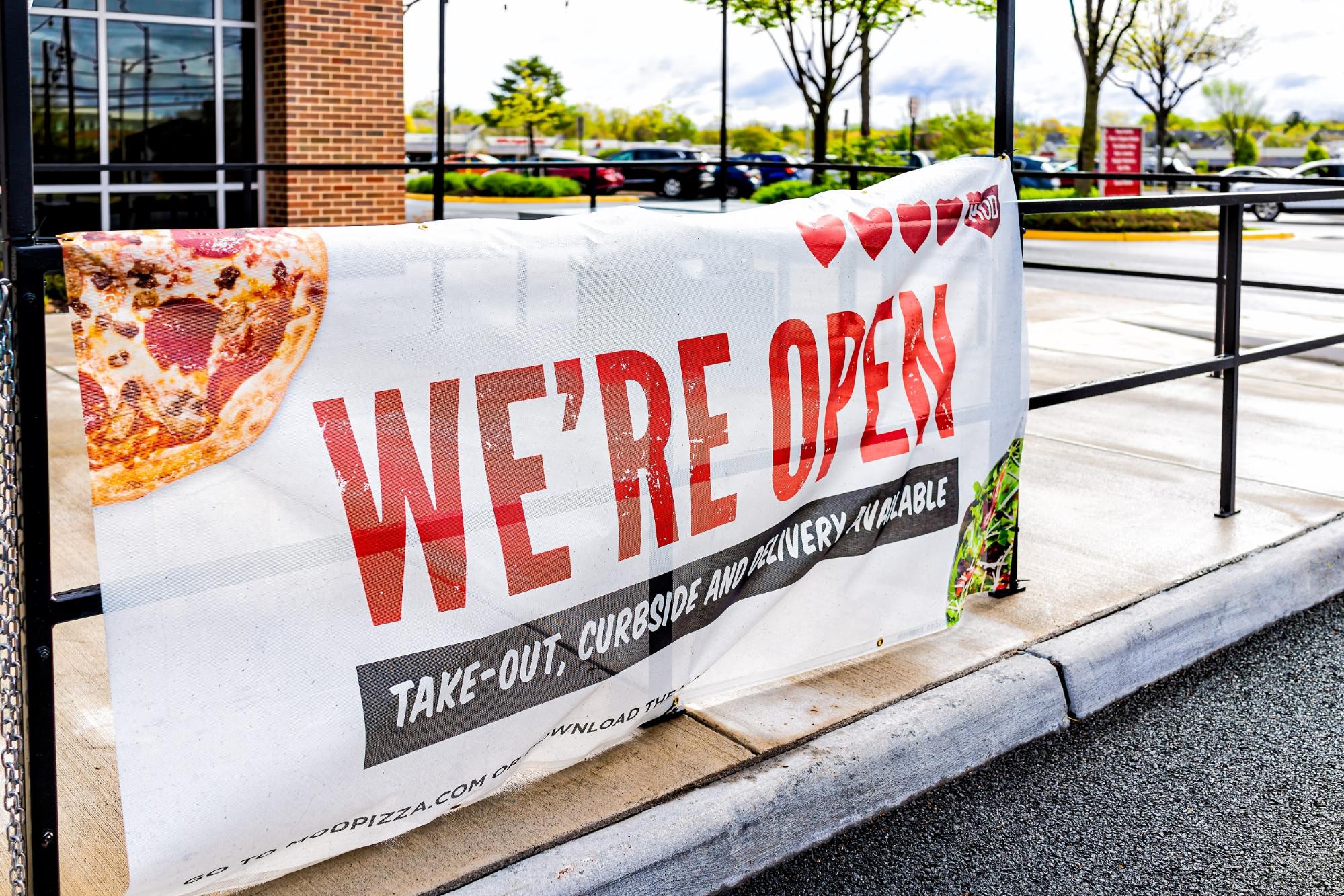Inkjet industry remains resilient during COVID-19
.jpg?width=750)
Stephen Buchanan, Business Development Manager at Kao Collins discusses the resilience of the inkjet industry during COVID-19.
Watching for—and responding to—disruptive technology and changing consumer interest factors into business decisions every day. But the coronavirus pandemic changed almost everything. Countries locked down. Consumers became hoarders. Business travel stopped.
Few leaders or strategic planners could have envisioned the worldwide disruption from the spread of Covid-19 but finding ways to endure and thrive when these events happen is part of strategic planning and visionary leadership.
The industrial inkjet printing industry was no exception. Kao Collins, which manufactures inkjet ink for commercial printers, has seen significant increases in orders for some inks and decreases for other inks.
“We’re adapting and finding new ways to navigate the new normal now,” said Stephen Buchanan, Business Development Manager at Cincinnati-based Kao Collins.
A research and development chemist, Buchanan moved from the lab at Kao Collins into his new role as Business Development Manager in January, before the pandemic upended business and life in general. He discusses what he’s seen so far in the inkjet printing industry, and how the industry is adapting.
Growing Demand for Food Packaging Inks

Immediately, as the pandemic took hold, the demand for food packaging inks increased dramatically. In the uncertainty, consumers stockpiled more than toilet paper–packaged food was also disappearing from store shelves fast. Food producers struggled to keep pace.
“Flexible packaging and labels are definitely booming right now,” Buchanan said.
Likewise, health-conscious consumers around the world bought up over-the-counter medicines. Pharmaceutical and medical-supply companies worked at a faster pace to supply hospitals.
While some manufacturers and distributors were forced to close, Kao Collins continued production as an essential business to supply inks for packaging and labelling medical and pharmaceutical items. The company worked extra shifts to meet customer demand. “We wanted to show our customers we were here to support them,” he said.
One ink distributor that was shut down contacted Kao Collins to help supply a customer. Inks were shipped directly to the end-user.
“It shows that in the ink industry, we’re collaborating; we’re working together.”
Wide-Format Printing Dips, Then Rebounds

Trade shows around the world were cancelled, and wide-format commercial printers initially took a big hit. They depended on the business from printing banners for conventions and shows.
Stores also stopped ordering promotional banners. This industry is an example of how the sector could adapt, Buchanan said.
Social distancing became the buzzword around the world. Essential retail stores needed to remind their customers to keep six or more feet of space between each other. To do that, they turned to wide-format printers to print floor decals.
When restaurants began offering carry-out service, they ordered banners that shouted, “We’re open!” Buchanan saw the work first-hand, from floor and window decals to bathroom signage.
“Going out in public, I’ve seen different printers and interesting signs that say, ‘stay six feet away’ or ‘stand here.’” The new normal, he said, “allowed wide-format guys to forge a new path forward and really make up some volume.”
Direct Mail Takes A Direct Hit

With unemployment increasing and consumer spending power lowering, companies began cutting their marketing spend on direct mail advertising.
High-speed direct mail printing of brochures, pamphlets, and fliers slowed, Buchanan said. But he expects the direct mail segment to bounce back.
There’s a good reason for that optimism. A 2016 study by the United States Postal Service found that 40% of the lucrative millennial demographic read direct mail thoroughly, compared to a very modest 18% for non-millennials.
Another study by Access Development, a company that manages networks of discounts and loyalty programs, found that direct mail supports brand loyalty among millennials. “All the industries have been finding a way to adapt,” Buchanan said.
eCommerce Serves Home-Bound Consumers

Similar to grocery store sales, eCommerce surged as consumers wanted to reduce potential exposure to the highly contagious virus.
This increased the demand for inkjet inks, which e-tailers need for direct printing on corrugated boxes and labels for secondary packaging.
Statistics Canada, a government agency, found that consumers flocked to e-Commerce during the lockdown. May 2020 sales more than doubled year-over-year, showing an increase of almost 111%.
Short-run Product Labelling Inks – Beyond Budweisers and Miller Lights

Craft breweries and regional wine producers are hitting the mark with consumers. Both often use inkjet printing to produce eye-catching labels, especially for seasonal and special releases. Inkjet printing is more cost-effective for producing the shorter runs of the labels needed for bottles.
“It’s fun to see all the different labels on the shelf, knowing that some of these are being done with inkjet,” Buchanan said. “It’s very cool.”
Niche segments like those are not the only businesses turning to inkjet printing for packaging. With the explosion of product SKUs, even big brands are needing more labels in lower quantities.
Also, Buchanan said, brands now customize product packaging to appeal to unique customer tastes or regional marketing campaigns.
“Brand owners are really trying to get creative with their packaging,” he said. Buchanan noted that higher-volume runs of inkjet printing are also profitable for converters.
Kao Collins Remains Customer-Focused
Throughout its long history, Japan-based Kao Corporation and subsidiaries have focused on innovation that results from the close relationships with customers. Kao Collins is no exception.
Since the onset of the pandemic, in-person visits with customers happen now on the web or on the phone. Some of the best information comes from the equipment operators, he says.
“The most interesting people I’ve spoken with are the press operators. They are running the ink through printing systems every day, so they have a lot of interesting information to share–how the ink performs, what the pluses and minuses are.”
Like many other companies, Kao Collins is adapting by staying connected to customers with FaceTime calls and video meetings on Microsoft Teams.
More Than Ink Sales
As the interview continued, Buchanan became introspective as he discussed what the new normal may look like for every industry.
“In the grand scheme of things, this is a lot bigger than inkjet. Anything we can do to help our customers, that’s priority number one,” Buchanan says.
“A little empathy goes a long way. That’s really what it’s all about.”
Topics
Interested in joining our community?
Enquire today about joining your local FESPA Association or FESPA Direct
Recent news

Streamlining personalisation with tech: Insights from the SmartHub Conference 2025 speakers
Personalisation Experience 2025 (6 – 9 May 2025, Messe Berlin, Germany) is running its inaugural SmartHub Conference from 6 – 8 May 2025.

Special Effects in DTF: How Neon Inks Are Making Apparel Pop
Neon fluorescent inks are the latest innovation in DTF printing, offering vibrant, eye-catching effects under both daylight and UV light, giving apparel decorators a competitive edge. Testing shows good wash durability, though market perception of added value is still developing. With increasing adoption and ongoing technological advancements, neon represents a significant upgrade for creative customisation.

Unlocking Growth Opportunities in the Printed Personalised Apparel Industry
The printed personalised apparel industry is booming, projected to reach $10.1 billion by 2030. Driven by consumer desire for self-expression and branding needs, technological advancements like DTG/DTF and e-commerce integration are key. Sustainability, eco-friendly materials, and on-demand printing are crucial growth drivers. Businesses leveraging these trends, including AI and social media, have significant commercial potential.

How to grow your business with white ink applications
Opaque white ink is revolutionising signage, vehicle graphics, wallcoverings, short-run and wood packaging, and window blinds by enhancing vibrancy and clarity. This enables printers to offer high-demand, standout products, boosting profit margins. HP Latex white ink applications and their large format printing solutions will be showcased at FESPA 2025 in Berlin.